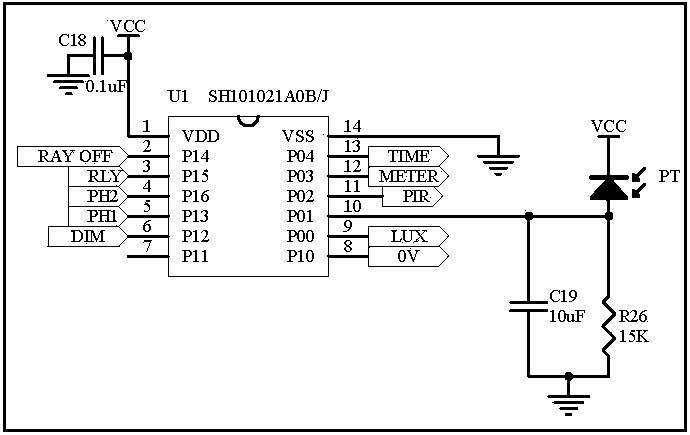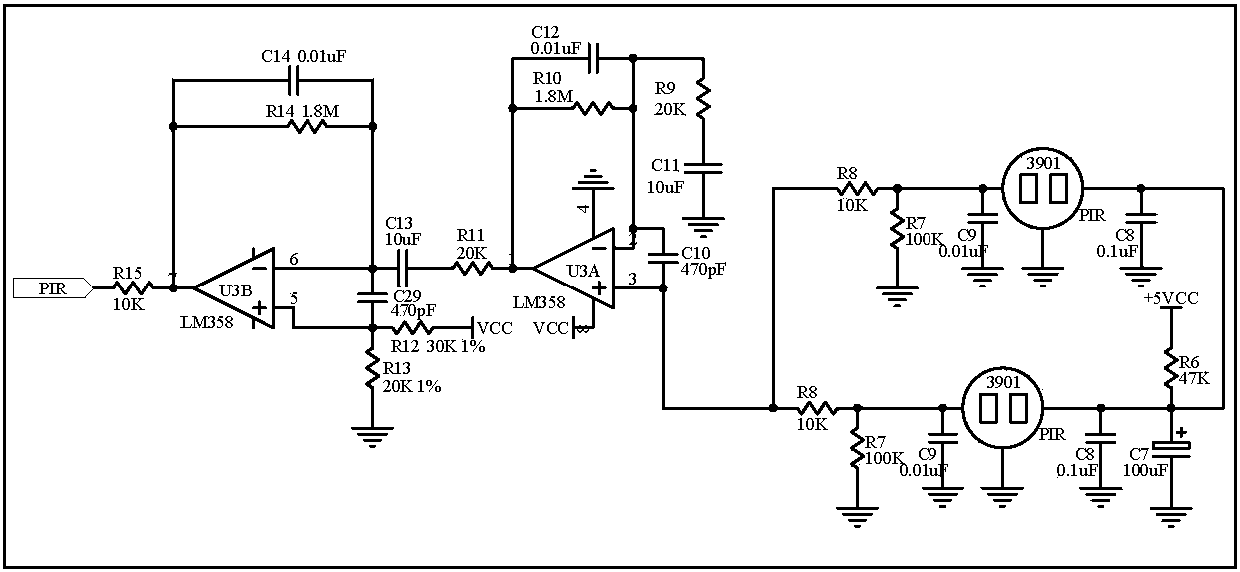Driver adjustment circuit
A technology for regulating circuits and drivers, applied in logic circuits, electrical components, electronic switches, etc., can solve problems such as inaccurate range values and difficult control of range values, and achieve the effects of wide delay range, simple design, and wide sensing range
- Summary
- Abstract
- Description
- Claims
- Application Information
AI Technical Summary
Problems solved by technology
Method used
Image
Examples
Embodiment 1
[0031] A driver regulation circuit, including an MCU module, a human body sensing module, a light control module, a power supply module, a PWM (PulseWidth Modulation, pulse width modulation, PWM for short) integration module, an output module, a relay control module, a power reduction module, and a delay module. Time module and human body sensing range adjustment module, human body sensing module, light control module, power supply module, PWM integration module, output module, relay control module, power reduction module, delay module and human body sensing range adjustment module are all connected to the MCU module , the MCU module includes a micro central processing unit; the PWM integral module includes a resistor R42 and a capacitor C42, the resistor R42 and the capacitor C42 are connected in series, and one end of the capacitor C42 is grounded; the output module includes an operational amplifier U5A, a resistor R43, a resistor R44, a resistor R45 and a MOSFET tube Q5, the...
Embodiment 2
[0039] Such as Figure 10 The difference between Embodiment 1 and Embodiment 2 is that the output module includes an operational amplifier U5A, a resistor R43, a resistor R44, a resistor R45, and a triode Q5. The C pole of the triode Q5 is grounded, and the B pole of the triode Q5 is connected to the The output terminal of the operational amplifier U5A, the C pole of the triode tube Q5 is connected in series with the resistor R45, one end of the resistor R45 is connected to +12VCC, the + terminal of the operational amplifier U5A is connected to +12VCC, the - terminal of the operational amplifier U5A is grounded, and the resistor R44 is connected in parallel at the - terminal of the operational amplifier U5A and the output terminal of the operational amplifier U5A. Other circuit designs are the same as in Embodiment 1. The reason for this setting is that the triode can guarantee the output voltage is 1V-10V, while the output voltage is 0-10V if the MOSFET is used.
Embodiment 3
[0041] The difference between Embodiment 3 and Embodiment 1 and Embodiment 2 is: Embodiment 3 does not have a relay control module, and the others are the same as Embodiment 1. Not setting the relay control module is to reduce the cost on the one hand, and to save more power on the other hand, and the circuit will be simpler.
PUM
 Login to View More
Login to View More Abstract
Description
Claims
Application Information
 Login to View More
Login to View More - R&D Engineer
- R&D Manager
- IP Professional
- Industry Leading Data Capabilities
- Powerful AI technology
- Patent DNA Extraction
Browse by: Latest US Patents, China's latest patents, Technical Efficacy Thesaurus, Application Domain, Technology Topic, Popular Technical Reports.
© 2024 PatSnap. All rights reserved.Legal|Privacy policy|Modern Slavery Act Transparency Statement|Sitemap|About US| Contact US: help@patsnap.com










